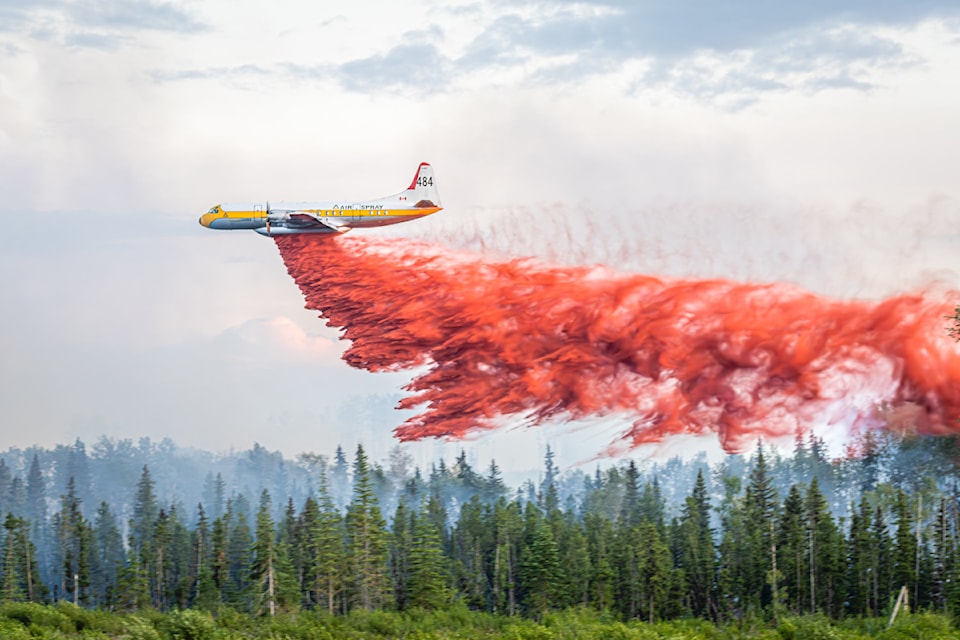Wildfires have so far burnt some 300,000 hectares in B.C., or about one-third of the area that had already burnt at this time last year.
Matt MacDonald, lead forecaster with B.C. Wildfire Service, said Wednesday (June 12) this figure of 300,000 is "not insignificant" in warning of another challenging wildfire season in parts of B.C. thanks to ongoing drought conditions and higher temperatures ahead.
"We have seen an active start to the fire season, but it has been really confined to that northeastern corner, down through much of the Prince George Fire Centre and then some fires in the Cariboo, which were earlier on in the season."
The most threatening of these early season-fires has been Parker Lake wildfire near Fort Nelson, which forced the temporary evacuation of some 5,000 people. B.C.'s northeastern corner remains a focus of concern because of pervasive drought conditions and hold-over fires. These conditions raise the likelihood of large, challenging fires in the region as the core summer season approaches.
Other areas of concern include B.C.'s southwestern Interior and Chilcotin regions.
"It's important to differentiate where we were last year and where we are this year," MacDonald said. "Yes, we had widespread fires last year, but this year it's confined to smaller regions. We will have large challenging fires in parts of the province, but again, not quite as extensive as what we saw in 2023."
But MacDonald – along with other speakers – warned against complacency.
Much of B.C. – aside from Vancouver Island and Metro Vancouver – can expect higher-than-normal temperatures, as the core of summer approaches and MacDonald urged residents to stay on top of forecasts in spelling out three possible scenarios leading to increased wildfire activity.
The first scenario foresees a strong and prolonged ridge of high-pressure exacerbating already dry conditions in some regions.
"We're just talking about seven to 10 days of dry seasonal temperatures and that will inevitably increase those build-up indices, increase the fire danger rating and all we will be missing at that point is ignition," MacDonald said.
The second scenario involves summertime cold fronts, which often generate thunderstorms and lightning. Some of these cold fronts do not deliver rainfall and can spark new fires, particularly on the heels of hot, dry periods.
"I think back to Aug.17-18, 2023 when a significant cold front swept across the entirety of the province and posed a big challenge to many communities in the southern Interior," MacDonald said.
The third involves persistent flows that could bring rain to west-facing mountains, but dry conditions to their lee, he said. Areas due to be impacted include the Chilcotin, Okanagan, the Rocky Mountain trench and the north-east corner, MacDonald said.
"All those areas stay very dry and warm in this persistent westerly flow pattern."
Emergency Management Minister Bowinn Ma repeated previous appeals to residents to prepare themselves and their properties for emergencies, pointing Wednesday to a new emergency planner available online. That preparation includes reviewing insurance information and getting insurance, if necessary.
Ma also reminded residents that rains in many parts of the province do not spell the end of drought conditions. B.C.'s snowpack is at 57 per cent of normal, she noted.
"We have been working with communities, industry and water licensees in key regions to respond to drought. As we move into the summer months, more and more people and businesses that hold water licenses will receive letters about drought conditions and the need as in previous years to reduce water use."
Ministry staff later added that these letters are asking for voluntary reductions, but also pointed out that government has regulatory powers it can exercise if necessary.
As of Wednesday, 108 wildfires are actively burning in B.C. Eighty-eight of those are holdover fires from 2023's season.


